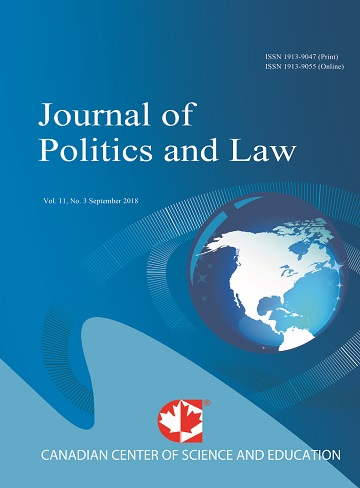Analysis of the Crime of Unlawful Seizure of State and Public Property
- Kamran Kouhbaei
Abstract
Unlawful seizure has the importance and a particular priority (from the criminal dimension) as one of the abuses of government officers than state and public funds and property in the legislative system. This importance is so strong that crimes in the unlawful seizure warrants in non-criminal laws in the years after the revolution. Unlawful seizure is including crimes against state property (in the general sense) that can be studied among criminal law from the crimes issues against property and ownership. Since the perpetrators of the crime are from the employees of governmental and public agencies Due to the lack of expertise, increasing the charge of the government and large volumes of laws and regulations are not aware of the three elements of the crime. Abundant contact of staff with the attracted target and their extension, that in the meantime, control all aspects of those objectives is facing constraints caused by government departments with the highest number of regulatory bodies in the field of witness. Also weakness of moral values and fading of the obscenity of crimes is caused reputational reduce costs and increase the number of perpetrators of crime detection, and is resulted the inability of management and supervisory institutions in the control of crime. In the prevention of this crime, relying on secondary prevention in people at risk of criminal policy can be effective, and training the various concepts and concepts that are effective in reducing crime. In any form, strengthening of regulatory bodies and religious and ethical values, transparency of rules as the best way of preventing or reducing crime in the area has been proposed. In this study, the author tries to explain the crime of illegal possession of public funds in accordance with the Code of Criminal Procedure the country. It should be noted that this type of research in the article will be libraries and analytical method, data and information.- Full Text:
 PDF
PDF
- DOI:10.5539/jpl.v9n10p113
Journal Metrics
h-index (2017): 14
i10-index (2017): 39
h5-index (2017): 9
h5-median (2017): 11
Index
- Academic Journals Database
- ACNP
- ANVUR (Italian National Agency for the Evaluation of Universities and Research Institutes)
- Berkeley Library
- CNKI Scholar
- COPAC
- CrossRef
- DTU Library
- EBSCOhost
- Elektronische Zeitschriftenbibliothek (EZB)
- EuroPub Database
- Excellence in Research for Australia (ERA)
- Genamics JournalSeek
- GETIT@YALE (Yale University Library)
- Ghent University Library
- Google Scholar
- Harvard Library
- HeinOnline
- INDEX ISLAMICUS
- Infotrieve
- Jisc Library Hub Discover
- JournalGuide
- JournalTOCs
- LOCKSS
- MIAR
- Mir@bel
- NewJour
- Norwegian Centre for Research Data (NSD)
- Open J-Gate
- PKP Open Archives Harvester
- Publons
- Pubmed journal list
- RePEc
- ROAD
- Scilit
- SHERPA/RoMEO
- Standard Periodical Directory
- Stanford Libraries
- UCR Library
- Ulrich's
- UniCat
- Universe Digital Library
- UoS Library
- WorldCat
- Zeitschriften Daten Bank (ZDB)
Contact
- William TaiEditorial Assistant
- jpl@ccsenet.org
